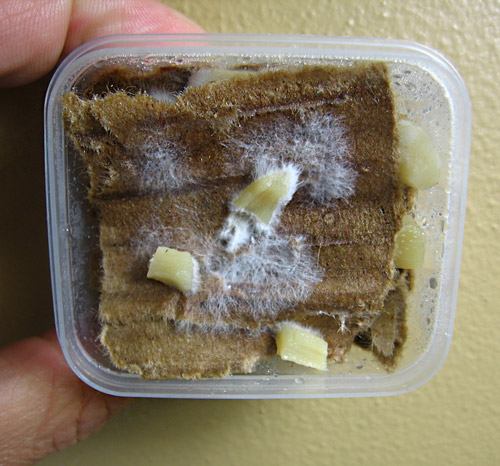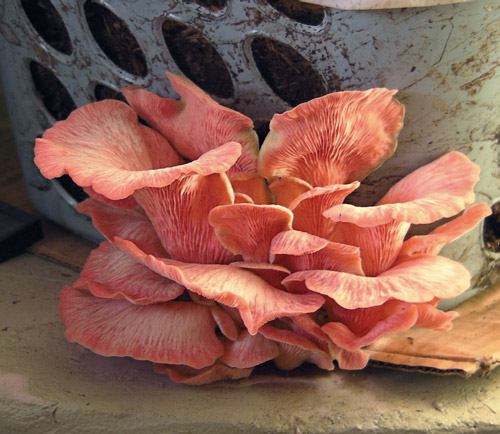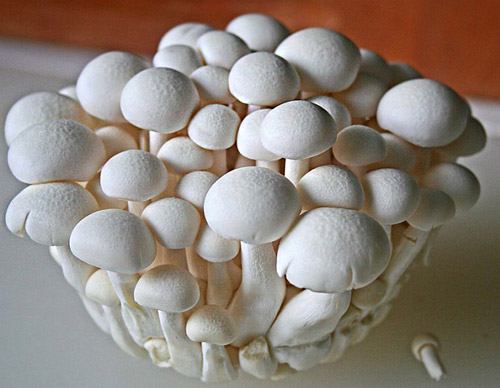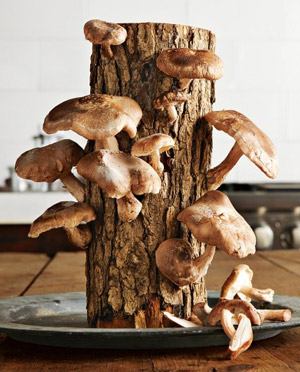Growing oyster mushrooms at home is not a myth, but a reality. If you are a “lucky” owner of a shaded, damp balcony on the lower floors of an apartment building, and the balcony is a source of nothing but troubles (no grass or flowers will grow there), then it is almost ideal for mushrooms. People keep chickens on balconies in the 21st century, so mushrooms are a fairly harmless hobby))).
Oyster mushrooms are well-suited for home cultivation – they tolerate temperature fluctuations, inconsistent humidity, and even summer lighting (within reasonable limits). Of course, there are “ideal” conditions for oyster mushrooms:
- Mycelium Growth: 23°C, 85-95% humidity, 2-3 weeks without light.
- Primordia Formation: 10-15°C, 95-100% humidity for three to five days, fresh air and partial shade.
- Fruiting: 15-20°C, 85-95% humidity, one week per flush, fresh air and partial shade.
How to Grow Oyster Mushrooms at Home
First, prepare the space for mushrooms on the balcony. This could be slats, a clothesline for hanging straw bales, or a metal shelving unit. You can build your own or purchase a balcony greenhouse.
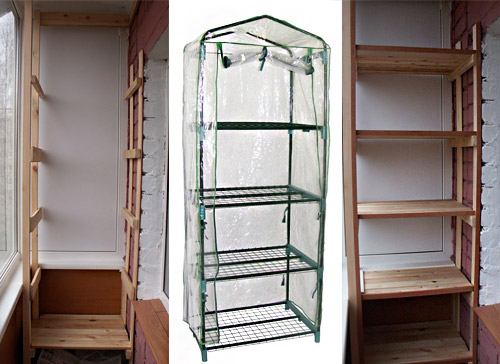 Идея, как оборудовать место для грибов: реечки для штанги или бельевой веревки (подвесить мешки), greenhouse, shelves.
Идея, как оборудовать место для грибов: реечки для штанги или бельевой веревки (подвесить мешки), greenhouse, shelves.
Materials:
- Prepared straw, chopped (pasteurized substrate for growing mushrooms. Instructions for preparing straw .)
- Plastic bags, packets
- Rubber bands for tying the bags (if growing in bags or packets)
- Plastic sheeting (to maintain and regulate humidity, protect from mold spores)
- Canvas, breathable fabric (to cover bags from direct light)
- Mushroom spawn (preferably on straw or grain, homemade spawn on cardboard )
- Sprayer for moisture (a regular sprayer attached to a plastic bottle)
- Thermometer and hygrometer (very desirable, it is difficult to gauge humidity by eye)
- Disinfectant solution (vinegar, hydrogen peroxide, alcohol, bleach)
Clean the growing area with a disinfecting solution, such as hydrogen peroxide from a sprayer, alcohol, vinegar, or a 1:20 (5%) lime solution. This prevents mold from developing in corners.
Mix the prepared straw evenly with the spawn: 1 kg of spawn can inoculate up to 10 kg of straw, or even more. Before starting, disinfect the materials you will use. If mixing not directly in the bag but in a container – wipe the container with alcohol or hydrogen peroxide.
The bag with inoculated straw can be tied as shown in the photo below. Cotton wool is used to protect against insects and mold spores. Leave the bags undisturbed for incubation, typically for about a week, without light.
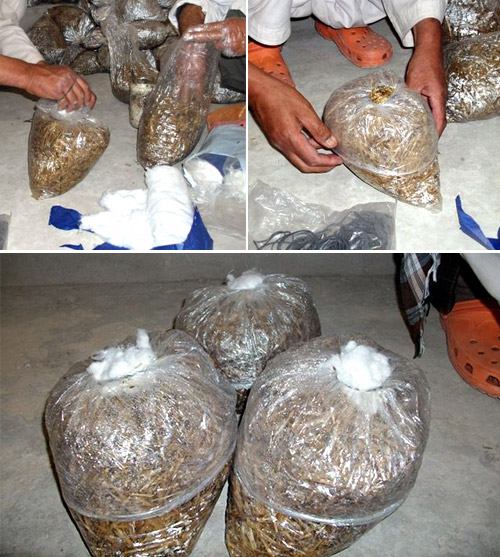 Example of packing straw into bags if they will be placed on a shelf.
Example of packing straw into bags if they will be placed on a shelf.
To protect from light, you can make a breathable canvas curtain for the shelves. The fabric should be boiled. The larger the bag, the longer the colonization will take. The mycelium initially tries to colonize all the available nutrients before fruiting. Fresh air access is essential.
Check the bags daily for mold or insects. When the bags turn white, you will need to make several holes for the mushrooms to emerge. Some mushroom growers tie up the bags without leaving holes at the top, but make holes directly in the bag.
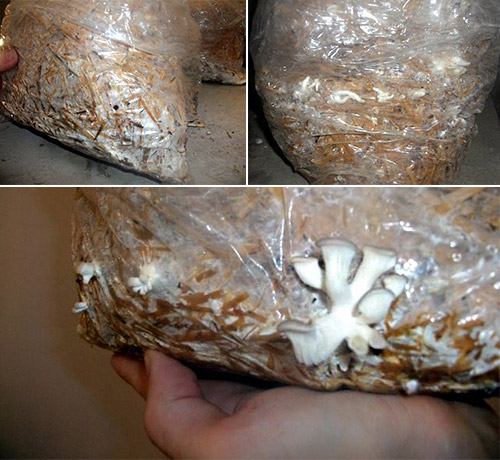 White bags from mycelium, mushroom primordia, and mushrooms
White bags from mycelium, mushroom primordia, and mushrooms
Once the first signs of fruiting appear, increase the humidity and lighting (light should remain diffused). Regularly mist the bags. You can dampen gauze and cover the mushroom bags with it (a tip from balcony mushroom growers). Place open containers of water on the balcony for evaporation. Maintain high humidity during fruiting and ensure fresh air.
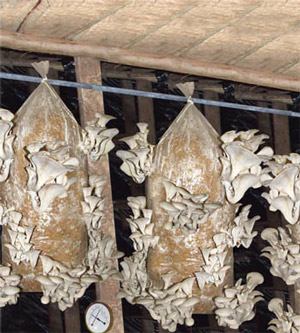 Hanging mushroom bags on a rail
Hanging mushroom bags on a rail
You can expect more than three harvests from one bag, usually about a week per flush. Harvest oyster mushrooms before they start to turn yellow.
Used straw can be used as animal feed or compost. Oyster mushrooms can also be grown in a laundry basket , in a roll of toilet paper, coffee grounds, or a jeans leg – each of these mushroom experiments will be covered separately. Perhaps you will start your mushroom adventure with one of these unusual methods.
